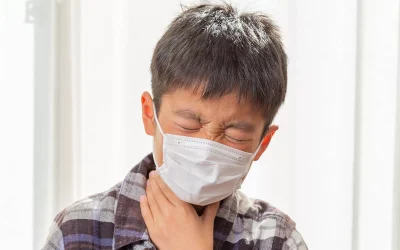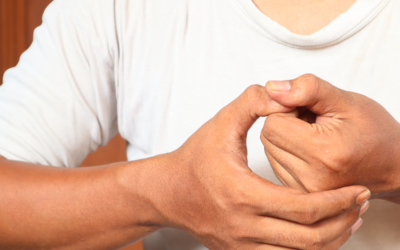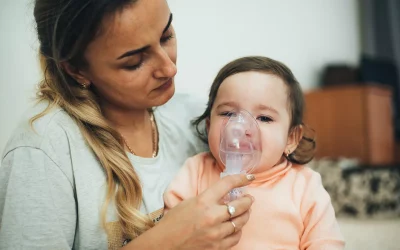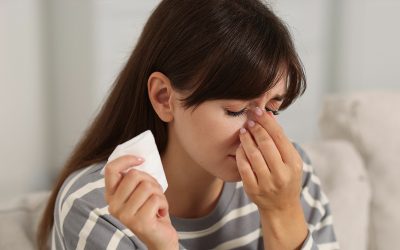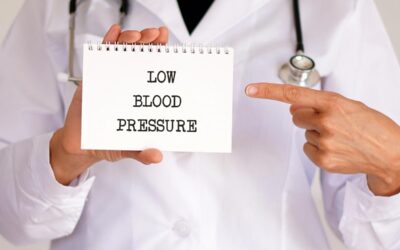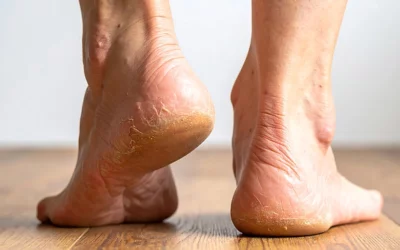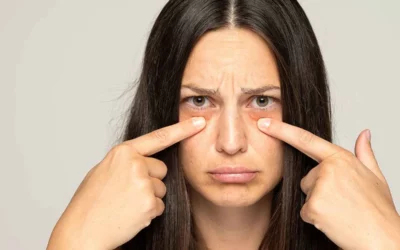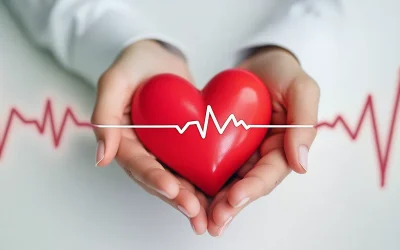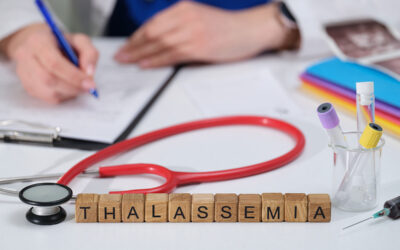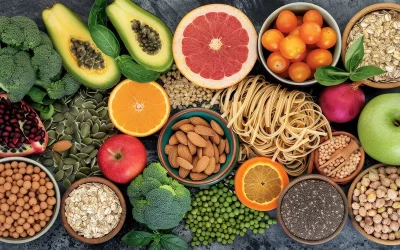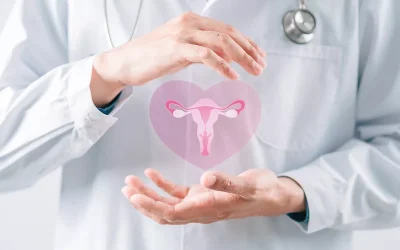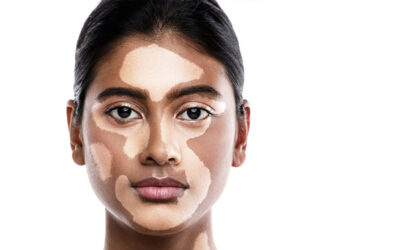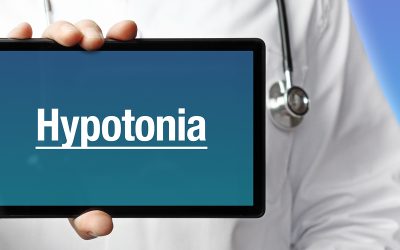World Cancer Day 2025: Spreading Awareness, Inspiring Action
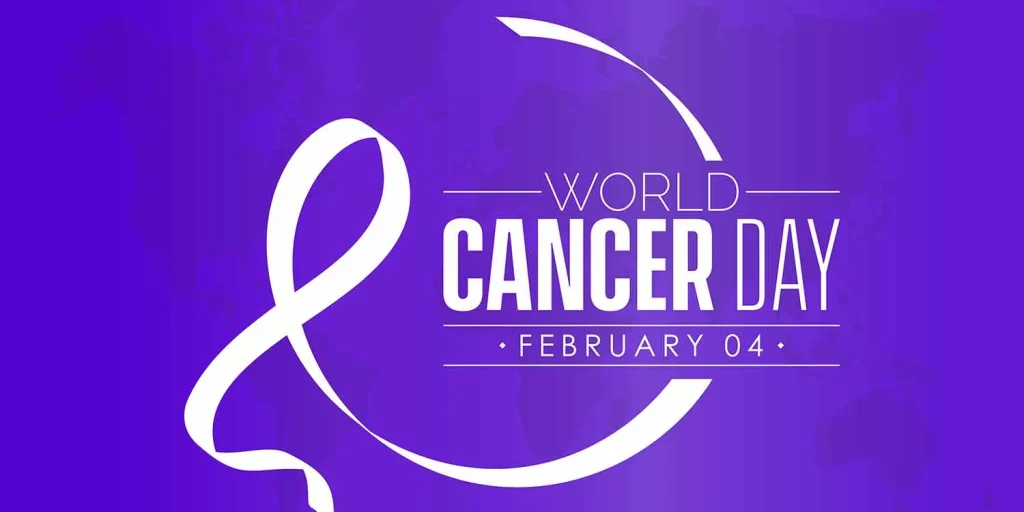
Cancer remains one of the most pressing health challenges worldwide, affecting millions of people every year. According to recent data from the WHO, cancer remains a leading cause of death worldwide, with an estimated 10 million deaths in 2022. World Cancer Day, observed annually on 4th February, serves as a reminder of the need to raise awareness, inspire action, and reduce the burden of this life-threatening disease. In this article, we’ll explore the significance of World Cancer Day, the steps you can take to lower your risk, and the importance of collective action in creating a cancer-free future. Let’s begin.
Table of Contents
ToggleThe History of World Cancer Day
World Cancer Day was established on 4th February 2000 at the World Cancer Summit for the New Millennium, held in Paris. Organised by the Union for International Cancer Control (UICC), the day was created to draw attention to the growing impact of cancer around the world and to encourage action to combat it.
The Paris Charter Against Cancer, signed during the summit, laid the foundation for this annual observance. Its goals were clear: promote research, improve patient care, raise awareness, and mobilise governments and communities to address the challenges posed by cancer.
Theme of World Cancer Day 2025
The theme for World Cancer Day 2025, “United by Unique”, marks the start of a three-year campaign from 2025 to 2027. This initiative focuses on a people-centred approach to cancer care, emphasising the individuality of each patient’s journey. By spotlighting personal stories, it aims to foster empathy, understanding, and inclusivity in cancer care.
The “United by Unique” campaign has three core objectives:
- Highlight Personal Stories: Share the journeys of patients, survivors, and caregivers to promote awareness and support.
- Encourage Personalised Care: Advocate for healthcare systems to provide tailored treatments and services.
- Foster Inclusivity: Ensure equal access to compassionate and effective cancer care for everyone, regardless of their background.
Through this theme, World Cancer Day 2025 seeks to inspire global action and reaffirm the commitment to reducing the impact of cancer through understanding, empathy, and collaboration.
Awareness: The Key to Fighting Cancer
Awareness plays a vital role in reducing the burden of cancer by encouraging early detection, dispelling myths, and promoting preventive measures. Here are some key reasons why awareness is crucial:
- Early Detection Saves Lives: Many cancers, such as breast and cervical cancer, are highly treatable when detected early.
- Reduces Late Diagnoses: Lack of awareness often results in cancers being diagnosed at advanced stages, limiting treatment options.
- Encourages Preventive Measures: Awareness empowers individuals to adopt healthy habits such as a balanced diet, regular exercise, and avoiding tobacco and alcohol.
- Debunks Myths: Helps eliminate stigma and misinformation, encouraging timely medical attention.
- Supports Community Action: Promotes collective efforts to advocate for accessible healthcare and support for patients.
Common Signs and Symptoms of Cancer
Cancer symptoms can vary widely depending on the type and location of the cancer. While some symptoms may be specific, others can be general and easily overlooked. Recognising these warning signs early can lead to timely diagnosis and better outcomes.
- Unexplained Weight Loss: Sudden weight loss without changes in diet or exercise may indicate an underlying issue.
- Persistent Fatigue: Constant tiredness that doesn’t improve with rest.
- Changes in Skin: Yellowing (jaundice), darkening, or redness of the skin, and unusual moles or sores that don’t heal.
- Lumps or Swelling: Any new lump or thickening in areas such as the breast, neck, or armpits.
- Persistent Pain: Ongoing pain in areas such as the abdomen, back, or joints without an obvious cause.
- Changes in Bowel or Bladder Habits: Diarrhoea, constipation, blood in stools, or difficulty urinating.
- Unexplained Bleeding or Bruising: Blood in cough, vomit, stools, or urine.
- Chronic Cough or Hoarseness: A cough that doesn’t go away or persistent hoarseness can signal throat or lung cancer.
Healthy Lifestyle Choices for Cancer Prevention
Adopting a healthy lifestyle is one of the most effective ways to reduce the risk of developing cancer. While no single factor can guarantee prevention, making mindful choices in your daily habits can significantly lower your chances of developing this disease.
1. Avoid Tobacco Products
- Tobacco use is a leading cause of cancer, particularly lung, mouth, throat, and oesophageal cancers.
- Quitting smoking and avoiding second-hand smoke can drastically reduce your risk.
2. Maintain a Healthy Diet
- Eat plenty of fruits, vegetables, whole grains, and lean proteins.
- Limit red meat, processed foods, and added sugars.
- Avoid excessive consumption of alcohol, as it increases the risk of liver, mouth, and throat cancers.
3. Stay Physically Active
- Regular exercise helps maintain a healthy weight, reducing the risk of cancers such as breast, colon, and endometrial cancer.
- Aim for at least 30 minutes of moderate activity, such as walking or cycling, most days of the week.
4. Protect Yourself from UV Radiation
- Use sunscreen and protective clothing to reduce the risk of skin cancer.
- Avoid tanning beds and seek shade during peak sunlight hours.
5. Get Vaccinated
- Vaccines such as HPV and hepatitis B can prevent infections that increase the risk of cervical and liver cancers.
6. Reduce Stress and Prioritise Mental Health
- Chronic stress can indirectly affect your health by promoting unhealthy habits such as smoking or overeating.
- Practice relaxation techniques, mindfulness, or yoga to manage stress effectively.
7. Regular Screenings and Check-Ups
- Early detection through routine screenings, such as mammograms or colonoscopies, can diagnose cancers at treatable stages.
Available Treatments and Support for Cancer
Cancer treatment varies depending on the type, stage, and individual patient needs. With advancements in medical science, many effective treatment options and support systems are now available to improve outcomes and quality of life.
1. Treatment Options
- Surgery: Surgery involves removing cancerous tumours and any affected tissue from the body. It is often the first treatment option for solid tumours that are detected in the early stages. For example, in breast cancer, a surgeon may remove the lump or, in more advanced cases, the entire breast (mastectomy) to stop the spread.
- Chemotherapy: Chemotherapy uses drugs to target and kill fast-growing cancer cells. These medications can be taken as pills, injected, or delivered intravenously. Sometimes, chemotherapy is used before surgery to shrink a tumour or after surgery to kill remaining cancer cells. It can also be combined with other treatments such as radiation or immunotherapy.
- Radiation Therapy: Radiation therapy uses high-energy beams such as X-rays or protons to destroy cancer cells. It is often used to shrink tumours or reduce pain in advanced cancer cases. For example, in cervical cancer, targeted radiation can destroy cancer cells while minimising damage to surrounding healthy tissue.
- Immunotherapy: This treatment helps your immune system recognise and destroy cancer cells. Advanced forms of immunotherapy include checkpoint inhibitors, which remove the “brakes” from your immune cells, and CAR-T cell therapy, which involves modifying your immune cells in a lab to attack cancer.
- Targeted Therapy: Unlike treatments that attack all rapidly dividing cells, targeted therapy focuses on specific genes or proteins in cancer cells that allow them to grow. For instance, certain breast cancers can be treated with HER2-targeting drugs, which specifically attack cells with the HER2 protein.
- Hormone Therapy: Hormone-sensitive cancers, like certain types of breast and prostate cancers, can be treated by blocking the hormones (such as oestrogen or testosterone) that fuel their growth. Medications or surgical procedures may be used to reduce hormone levels.
- Stem Cell Transplants: Often used for blood cancers such as leukaemia and lymphoma, this procedure restores healthy blood-forming cells that were damaged by high doses of chemotherapy or radiation. Healthy stem cells can come from the patient (autologous transplant) or a donor (allogeneic transplant).
2. Support for Cancer Patients and Caregivers
- Emotional and Psychological Support: Dealing with cancer can be overwhelming, so emotional support is crucial. Counselling services help patients cope with anxiety, fear, and depression. Support groups offer a safe space to share experiences and connect with others facing similar challenges, providing comfort and encouragement.
- Palliative Care: Palliative care focuses on relieving symptoms such as pain, nausea, or fatigue, regardless of the stage of cancer. It aims to improve the patient’s comfort and overall quality of life, often working alongside treatments such as chemotherapy or radiation.
- Nutritional Guidance: Maintaining proper nutrition is vital for staying strong during treatment. Dieticians can design meal plans to manage side effects such as loss of appetite or nausea. They recommend foods that boost energy and immunity, such as lean proteins, whole grains, and fresh fruits.
- Financial Assistance: Cancer treatment can be expensive, but various organisations and government programs can help. These provide financial aid for treatments, medications, and sometimes even daily expenses, easing the financial burden on patients and families.
- Rehabilitation Services: After intensive treatments such as surgery or chemotherapy, patients may need physical therapy to regain strength or occupational therapy to resume daily activities. Rehabilitation focuses on improving mobility, balance, and independence.
- Home Care Support: For patients undergoing treatment or recovering at home, professional caregivers provide assistance with daily activities such as bathing, dressing, and medication management. Home care services ensure comfort and consistent monitoring of symptoms in a familiar environment.
Advances in Cancer Research and Treatment
Recent advancements in cancer research are reshaping the way we diagnose, treat, and manage the disease. These innovations are providing new hope for patients and improving outcomes. Here are some of the most significant breakthroughs:
1. Liquid Biopsies: A Revolutionary Diagnostic Tool
- Liquid biopsies analyse blood samples to detect circulating tumour DNA (ctDNA) and other biomarkers.
- This non-invasive method enables early detection of cancer, monitors treatment progress, and identifies potential recurrence without the need for invasive procedures.
2. Targeted Therapy: Precision-Based Treatment
- Targeted therapies focus on specific genetic mutations in cancer cells, offering a personalised approach to treatment.
- Drugs such as HER2 inhibitors for breast cancer and tyrosine kinase inhibitors for lung cancer are examples of this precise method, reducing side effects and improving effectiveness.
3. AI in Cancer Diagnosis and Care
- Artificial intelligence is transforming cancer detection and treatment planning.
- AI algorithms can analyse medical images, such as mammograms and CT scans, with exceptional accuracy, aiding in the early detection of cancers such as breast and lung cancer.
4. mRNA Vaccines: A New Frontier in Prevention
- Inspired by the success of COVID-19 vaccines, researchers are developing mRNA-based cancer vaccines.
- These vaccines aim to teach the immune system to identify and eliminate cancer cells, with promising early results in trials targeting melanoma.
5. Advances in Radiation Therapy
- Technologies such as proton beam therapy deliver highly targeted radiation to destroy cancer cells while sparing surrounding healthy tissue.
- Image-guided radiation therapy (IGRT) enhances precision, particularly for tumours in challenging locations.
6. Personalised Medicine: Tailored to Each Patient
- Advances in genomic research allow treatments to be customised based on a patient’s genetic profile.
- Personalised approaches are more effective, minimising trial-and-error in selecting therapies and reducing unnecessary side effects.
7. Progress in Palliative Care
- New techniques in pain management and symptom relief are enhancing the quality of life for cancer patients.
- Integrative therapies such as acupuncture, mindfulness, and nutritional support are being incorporated to improve overall well-being during treatment.
Common Myths about Cancer
Misinformation about cancer often creates unnecessary fear or leads to neglect of important symptoms and preventive measures. Here are some common myths about cancer and the facts that dispel them:
Myth 1: Cancer is always fatal.
Fact: While cancer can be serious, many types are treatable and even curable when detected early. Advances in research and treatment have significantly improved survival rates.
Myth 2: Only older people get cancer.
Fact: Cancer can affect people of all ages, including children and young adults. Certain types, such as testicular cancer and leukaemia, are more common in younger individuals.
Myth 3: Cancer spreads when exposed to air during surgery.
Fact: Surgery does not cause cancer to spread. It is a crucial treatment option and is often the best way to remove tumours effectively.
Myth 4: Eating sugar makes cancer grow faster.
Fact: While all cells, including cancer cells, use glucose for energy, eating sugar does not directly cause cancer to grow. However, a balanced diet is essential for overall health.
Myth 5: Cancer is contagious.
Fact: Cancer cannot spread from one person to another through contact. However, some infections (such as HPV or hepatitis) can increase the risk of developing certain types of cancer.
Myth 6: A family history of cancer means you will get it too.
Fact: While genetics can increase the risk, lifestyle and environmental factors also play a significant role. Regular screenings and healthy habits can help mitigate this risk.
How to Participate in World Cancer Day
World Cancer Day is a global initiative encouraging individuals, communities, and organisations to join the fight against cancer. Here are some impactful ways you can contribute and make a difference:
1. Educate Yourself and Others
- Learn about cancer prevention, early detection, and treatment options.
- Share accurate information with friends, family, and your community to dispel myths and raise awareness.
2. Attend or Organise Events
- Participate in local or virtual awareness campaigns, seminars, or fundraisers.
- Organise activities such as awareness walks, webinars, or health talks to spread knowledge about cancer.
3. Support Cancer Patients and Caregivers
- Offer emotional support to someone undergoing treatment or caring for a loved one.
- Volunteer at cancer care centres or donate to organisations providing resources for patients and their families.
4. Advocate for Access to Healthcare
- Join campaigns advocating for better cancer care policies, improved healthcare facilities, and funding for research.
- Use social media to amplify messages about equitable access to cancer treatments and screenings.
5. Get Screened and Encourage Others
- Schedule regular screenings for early detection, especially if you have risk factors or a family history of cancer.
- Encourage loved ones to prioritise their health and undergo routine check-ups.
6. Donate or Fundraise
- Contribute to cancer research organisations or patient support funds.
- Start a fundraiser to support those who cannot afford treatments or medications.
7. Spread Awareness on Social Media
- Use hashtags such as #WorldCancerDay or #CloseTheCareGap to share stories, facts, or resources.
- Post videos or graphics that encourage others to join the cause.
8. Make Lifestyle Changes
- Use this day as an opportunity to adopt healthier habits, such as quitting smoking, eating better, or exercising more.
- Inspire others by sharing your progress and motivating them to take similar steps.
Conclusion
World Cancer Day is a powerful reminder of the need for collective action in the fight against cancer. By spreading awareness, promoting early detection, and adopting preventive measures, we can work together to reduce the impact of this life-altering disease. Remember, every step taken toward better health—whether through lifestyle changes, regular screenings, or supporting cancer research—makes a difference. At Graphic Era Hospital, we are committed to providing compassionate care, advanced diagnostics, and personalised treatment plans for all patients. If you or a loved one are concerned about cancer risks, visit us for expert consultations, comprehensive screenings, and tailored care solutions.
Take charge of your health today—schedule your appointment with Graphic Era Hospital and take the first step toward a cancer-free future.
By Specialities
- Bariatric Surgery
- Cancer Care
- Cardiology
- Dental
- Dermatology
- Diabetes & Endocrinology
- Endocrinology and Diabetes
- ENT (Ear Nose Throat)
- Eye Care
- Gastroenterology
- Haematology
- Health Care
- Health Tips
- Hematology
- Hepatology
- Internal Medicine
- Mental Health and Behavioural Sciences
- Metabolic
- Neonatology
- Nephrology
- Neurology
- Nutrition & Dietetics
- Obstetrics & Gynaecology
- Oncology
- Ophthalmology
- Orthopaedics
- Paediatric
- Physiotherapy & Rehabilitation
- Plastic and Reconstructive Surgery
- Psychology
- Pulmonology
- Rheumatology
- Spine
- Urology
Recent Posts
- Strep Throat Treatment: Home Remedies and Effective Medical Care
- Does Cracking Your Knuckles Cause Arthritis?
- Understanding Bronchiolitis: A Complete Guide for Parents
- Understanding Sinusitis: Types, Symptoms, and Treatment Options
- What Causes a Sudden Drop in Blood Pressure? Know the Symptoms Before It’s Too Late
Need expert medical advice?
Share your details and our healthcare specialists will reach out to assist you.
By proceeding, you acknowledge and agree to our Privacy Policy, Terms of Use, and Disclaimer.
